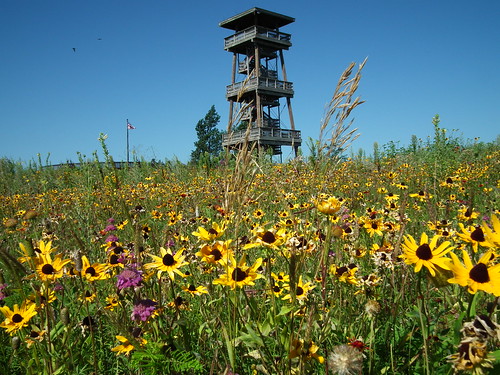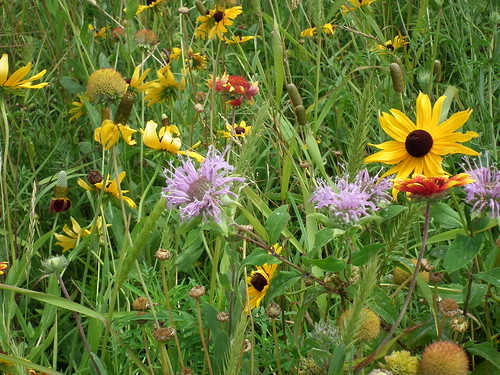
South Dakota is in the middle of the Great Plains, a vast prairie ecosystem stretching across much of North America that two hundred years ago was covered in native grasses and wildflowers. Today, visitors can get a glimpse of the prairie of the past, with the help of NRCS’ Conservation Technical Assistance Program.
Nicollet Tower, located west of Sisseton, SD, is on the eastern edge of the Coteau de Prairie. Many visitors annually use the interpretive center and climb the tower for a remarkable view of three states—South Dakota, North Dakota and Minnesota.
Dedicated in 1991, Nicollet Tower honors the Frenchman Joseph N. Nicollet, who in 1838–1839 mapped the area between the Mississippi and Missouri. Nicollet created the first accurate map of this area, contributing greatly to early geographic understanding of it.
In 2009, the Nicollet Tower and Interpretive Center tapped into USDA’s Natural Resources Conservation Service (NRCS) planning expertise, when its Board of Directors contacted NRCS’ Sisseton Field Office for help in establishing native wildflowers and grasses in an 8,000 square-foot area on the grounds. The major goal was to reduce maintenance associated with the previous large turf grass lawn, such as water use, labor and fuel expense.
A secondary goal was to create habitat for native pollinators, including the many species of native bees in South Dakota. All of USDA makes protecting pollinators a priority, as they are responsible for one out of every three bites of food we eat. Many NRCS programs provide incentives for creating pollinator habitat on agricultural land.
The Board drew upon the knowledge of NRCS staff in designing the new landscape with native wildflowers and grasses to mimic the original native prairie. With a considerable amount of seedbed preparation over one growing season, the existing vegetation was killed. Next, the area was tilled and compacted with a land roller. A drop seeder was then used to plant four pounds of seed followed by an additional land rolling to ensure the seeds established.

After a year and a half of preparation, the area was seeded with 23 native wildflowers and 7 native prairie grasses, and within weeks many flowers were already blooming! An NRCS evaluation this year found wildflowers in full splendor.
When employees noted intense buzzing of bees, they knew their goal of feeding pollinators had been attained. The landscape will still require maintenance to take care of unwanted plants deposited by wildlife or blown in by the wind—but it will be much less than when it was a lawn.
This project was a cooperative effort between the Roberts Conservation District, Nicollet Tower and NRCS Sisseton Field Office.
Check out more conservation stories on the USDA blog.
Follow NRCS on Twitter.



